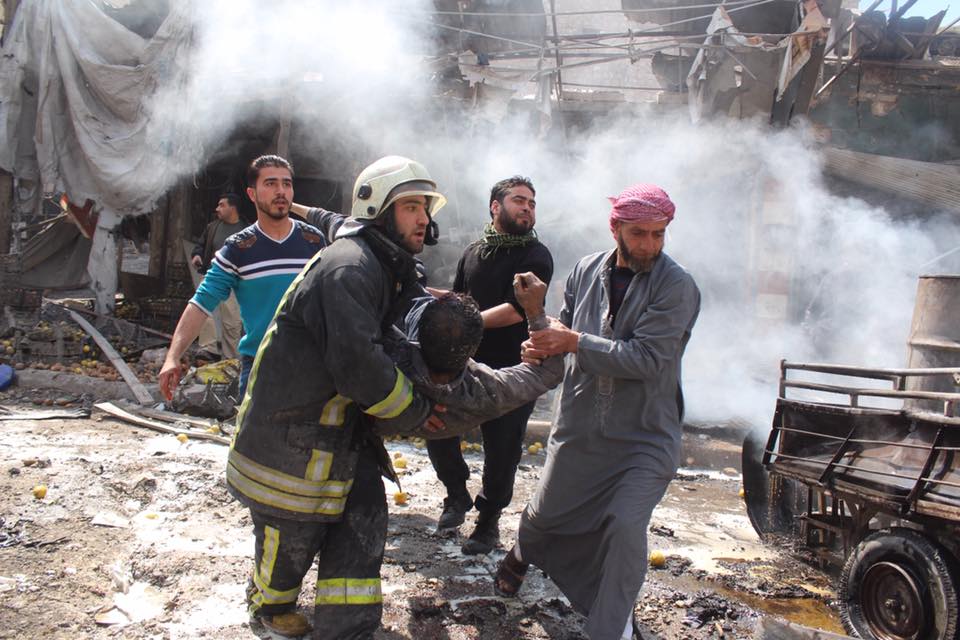Over the last ten years, caring about other people has become dangerous business. The risk of death for aid workers has never been higher.
A grim new World Health Organization report summarizing the data on attacks against health care personnel illustrates that the risk has increased across the board, not just for international aid workers. The brief document summarizes the seriousness of the problem, and calls for more accountability and better data on the health care personnel who are killed as a result of their work.
According to the report, 594 attacks took place in 2014 and 2015, and 959 people died in the 19 countries in which WHO was tracking emergency response. These were not accidental deaths. More than half (62%) of those attacks are categorized as intentionally targeted at health facilities or health personnel. Most of the attacks were against health care facilities, but 25% were aimed at individual health care workers.

The report is linked to a new WHO tracking system designed to identify and categorize attacks on health care personnel, separately from the overall causalities seen in conflict. The 19 countries included in this report were selected because they had active humanitarian emergencies in 2014-2015. According to the methodology of the report, the data collected “are the result of a review of secondary data from a variety of open sources on individual attacks on health care that reportedly took place from January 2014 to December 2015 in countries with emergencies.”
Both the report and the tracking system are part of a larger UN effort to reduce these kinds of deaths. In early May, the UN Security Council passed Resolution 2286 (2016), Strongly Condemning Attacks against Medical Facilities, Personnel in Conflict Situations. Upon passing the resolution, United Nations Secretary-General Ban Ki-moon said “Even wars have rules… the Council and all Member States must do more than condemn such attacks. They must use every ounce of influence to press parties to respect their obligations.”
The data provide by this report make it clear why the issue of attacks against health care workers has suddenly become so pressing. According to the report, the types of attacks include: “bombings, explosions, looting, robbery, hijacking, shooting, gunfire, forced closure of facilities, violent search of facilities, fire, arson, military use, military takeover, chemical attack, cyberattack, abduction of health care workers, denial or delay of health services, assault, forcing staff to act against their ethics, execution, torture, violent demonstrations, administrative harassment, obstruction, sexual violence, psychological violence and threat of violence.” It then recommends a better classification system for categorizing the types of violence committed.
In addition to being intentional, the report states that 53% of the attacks against heath care providers were committed by state actors; they cannot be attributed to terrorists or other rogue perpetrators. 16 of the 19 countries saw attacks against health care in both 2014 and 2015. Furthermore, only 4% of attacks on health care were aimed at patients to families. Health care personnel are not caught in the crossfire. They are all too often the target. Both the highest number of attacks and the highest number of deaths took place in Syria; 228 attacks against health care occurred and 352 people died.

What it doesn’t say
This report was pushed to the media on the last day of the 68th World Health Assembly (WHA). The WHA is the supreme decision-making body of WHO, attended by delegations from all WHO Member States. If there was a time for the WHO to establish a new policy towards protecting its own staff from these kinds of attacks, the WHA would be the place for it. The report, however, makes no note of planned WHO actions beyond better tracking of these kinds of attacks.
It also has few broader recommendations on how to stop this kind of violence. This is in keeping with the WHO approach – first the problem is identified, then data is collected, and finally recommendations are issued. This report is stage one or two; it is about the data gap as much as it is about the violence itself. We’ll probably see at least one more discussion of data collection and data before we get to the recommendations. Reading the report, though, it makes one want to see the problem stop now. Isn’t there any immediate recommendation that could be made?
Doctors without Borders, for example, has called for a return to “norms that govern the conduct of war.” This report ends with a dry paragraph stating that best practices in reducing the risk of attack on health care include “adapting emergency response planning, engaging communities, conducting security analyses, training, making hospitals safer, removing administrative and legal obstacles to health care delivery, and implementing the Sendai Framework for reducing risks before, during and after emergencies.”
One sentence takeaway
Nearly a thousand people have lost their lives for trying to save others, and no one has a decent plan for putting a stop to the deaths.
